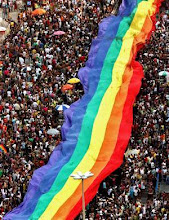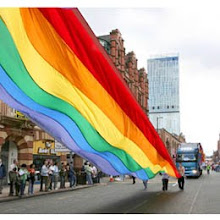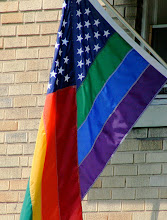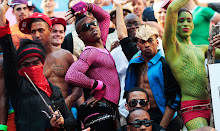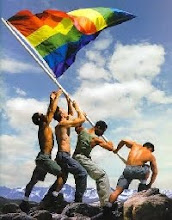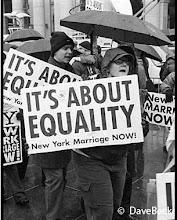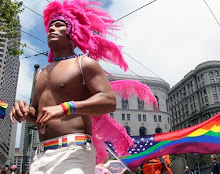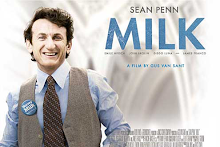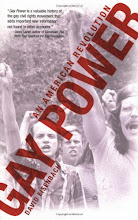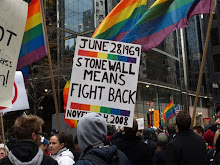Thursday, March 4, 2010
3rd Response to Blog
The next presentation that i looked at was Sammy's. Her topic was about polution and environment. I know that we have a polution problem in the world, and that the more polution that accumulates the more it eats away at our ozone layer, which could potentially destroy our planet in the long run. But i didn't know that polution was so bad in countries that it caused birth defects. there was a video that i watched in Sammy's presentation about how pesticides can affect people. there were pictures of baby's with no arms and no legs, because there parents worked in tomato fields before giving birth to them. there are so many pesticides in the fields that the workers work in that it gets into there system and pollutes there bodies. i only knew about the polution of the earth, and this video showed me that there is also human bodies being poluted too. another video that was very empowering was a video that said that 30.3% of the polution in the owrld is casued by the U.S.A. and that 33% of chinease people live in cites with such bad air polution that it is equivilent to smoking 2 packs of cigarettes a day. In russia the smog is so heavy on some nights you cant even see the stars. In Mexico the polution is so heavy that kids when they draw the sky in pictures they rarely use the color blue. all of these statements are very sad to me, because none of them should be true. you should be able to see the stars at night, and draw the sky blue, and be able to live in a city where your not having to worry about getting lung cancer becasue of the area you live in. this video really effected my opinion about polution, it is a huge problem in the world and i dont think that people understand how much it is affecting our world.
2nd Response to Blog
The presentation that i looked at was Kimmy's. I didn't know a whole lot about the history of womens rights, just the general information that most people know. there was a slide in her presentation that didnt have very much on it except two pictures and an arrow. the first picture was of a 60's housewife with an arrow pointing to the second picture of a business woman. i thought that this was a great slide becasue it was simple but it showed how much times have changed. another slide that cought my attention was about Susan B. Anthony. Kimmy said that Susan B. Anthony wanted to vote, so even though the law said that she was not allowed she went ahead and did it anyway. This reminds me of the civil rights movements, becasue it was the same type of thinking, if they dont want us to do something then we will do it anyways and force then to accept it because we wont stop.
1st Response to Blog
The presentation that i looked at was Laura's. her topic was also about Gays and Lesbians, but she focused on being silent. There was a video in Laura's presentation that really stood out in my mind; it was the slide with all of the different groups of people with something covering their mouths whether it was there hand or a bandana. then there was a video in the center of all of the pictures that showed teens of all different backgrounds, genders, and race just standing there in front of the camera not speaking or doing anything, just standing. This video got me thinking that they probably did this because this is what gays and lesbians must feel like everyday they just go through life without speaking or talking about the biggest part of their life, they are just silent. i think that this was one of the most powerful slides in the whole presentation, becasue when you see a video you are expecting to hear talking or some type of music in the background, and it is surprising when you find out that it wasn't your headphones and that it is supposed to be like that. And then you start to watch the video the way it was presented and it is very moving.
Works Cited
"gay rights." American History. ABC-CLIO, 2010. Web. 29 Jan. 2010. ."gay rights." American History. ABC-CLIO, 2010. Web. 29 Jan. 2010.
"don't ask, don't tell policy." American History. ABC-CLIO, 2010. Web. 29 Jan. 2010.
Deitcher, David, ed., The Question of Equality: Lesbian and Gay Politics in America since Stonewall, 1995; National Gay and Lesbian Task Force (http://www.ngltf.org/); Newton, David E., Gay and Lesbian Rights, 1994.
Shilts, Randy, The Mayor of Castro Street: The Life and Times of Harvey Milk, 1982; Weiss, Mike, Double Play: The San Francisco City Hall Killings, 1984.
Bello, Marisol. "On Marriage Rite, Gays Refocus." USA Today 07 Jan 2010: A.10. SIRS Researcher. Web. 03 February 2010.
"Bowers v. Hardwick (1986)." American History. ABC-CLIO, 2010. Web. 8 Feb. 2010.
"don't ask, don't tell policy." American History. ABC-CLIO, 2010. Web. 29 Jan. 2010.
Deitcher, David, ed., The Question of Equality: Lesbian and Gay Politics in America since Stonewall, 1995; National Gay and Lesbian Task Force (http://www.ngltf.org/); Newton, David E., Gay and Lesbian Rights, 1994.
Shilts, Randy, The Mayor of Castro Street: The Life and Times of Harvey Milk, 1982; Weiss, Mike, Double Play: The San Francisco City Hall Killings, 1984.
Bello, Marisol. "On Marriage Rite, Gays Refocus." USA Today 07 Jan 2010: A.10. SIRS Researcher. Web. 03 February 2010.
"Bowers v. Hardwick (1986)." American History. ABC-CLIO, 2010. Web. 8 Feb. 2010.
Thursday, February 11, 2010
Analysis on Background Information

The topic that I wrote about was gays and lesbians. The articles that I read about for journal responses were about the bowers vs. Hardwick (1986), marriage rights, Harvey milk, the stonewall riots, don’t ask don’t tell policy, gay rights, and gay and lesbian rights. These articles were all about how gay rights have become a higher importance today. In the 70’s and 80’s gay and lesbians were never talked about and when they were talked about they were referred to as people who had a disease, because there had to have been something wrong with them if they liked someone of the same-sex. These people who thought that gays had a disease or mental disorder had begun the controversy that was holding back the government from giving the homosexuals their rights. The first example of when gays and lesbians banded together and took action for what they wanted was the Stonewall riots. The stonewall riots took place at a place called the stonewall inn. The gay man was not allowed to be in the bar because there was already another gay man in the bar. The homosexuals thought that this was wrong, so they all banded together and protested outside of the inn. This rioting marks the week of gay pride week. Gay pride week has grown from 10,000 people marching to hundreds of thousands to millions. The stonewall riots brought notice to the mistreatment of homosexuals. As people started to take notice of the gays other issues came about, like allowing gays and lesbians to marry, everyday rights, and the right to be who they were in the army. Men like Harvey Milk who was a man in a place of government, used his status to bring notice to the unfairness that homosexuals had to deal with in everyday rights. Then there is the case of Bowers vs. Hardwick where a man named Hardwick was trying to not get convicted of the anti-sodomy laws made for gays that he broke with his partner. The argument that defended this case in court was that for straight people there were anti-sodomy laws so why were there laws for gays and lesbians? Many cases were brought up in court about the anti-sodomy laws and then that started to develop into the main focus that gays are fighting for today which is marriage rights. If American society stopped looking at gays and lesbians as people who had a problem and started looking at them as normal people, then we wouldn’t have this many problems in society today. Americans are always stereotyping people, from Jews to blacks to just normal people that they see on the street. The stereotypes that Americans have put on homosexuals are derogatory and are affecting how the government makes decisions on gay rights. People are afraid that if they give the gays what they want then they will have to give all of the similar minorities the same rights. And they also feel that if they don’t give the gays what they want that they will just go back to being invisible and disappear for awhile. Whether those people around them accept gays or not, they won’t go back to being invisible, if anything changes, they will only become more present, and less invisible.
Analysis on Literature
The book that I read is called “Am I Blue?”, and the short story that I read was called “Three Mondays in July.” The story is about a young man who feels that he is a homosexual, but he keeps quiet about it because of the society that he lives in today would not except him. He then meets a man who tells him that “just remember one thing-you’re not alone.” The idea that this story wants to convey is that there are people all over who are homosexuals and they feel uncomfortable in their own skin because being a homosexual is frowned upon in society. The book is trying to show that society needs to be accepting and loving of people, because even though someone may be different they are still a human. The perspective that the author took in writing this short story or the entire book itself, was to show that society is pushing gay and lesbian people aside and forcing them to become invisible, and they are so worried about the issue that they use it in a derogatory sense. The author points out in the story called “Am I Blue” that “straights are helpless at it. They’re always assuming someone is or isn’t for all the wrong reasons.” In the story the author tries to show that any person could be a homosexual, and that they could have the same interests, job, and similar lifestyle as someone who could be against it. The main message of the entire book is that homosexuals live among us, and whether people who want to recognize it or not, they could very well be someone you know, or the person that you least expect. In the story I am blue there is a little boy and his fairy godmother changed all of the gay people blue, to show the kid that he was not alone in the world. The child saw “the fat guy who ran the grocery store, looked like a giant blueberry – which surprised me, because he was married and had three kids. On the other hand, my Thomayke, the librarian, who everyone knew was a lesbian, didn’t have a trace of blue on her.” Society stereotypes gays as being graphic, and very open about sexual behavior, they slur their words, and they walk funny. All of these stereotypes have lead straight people to believe that other people are homosexuals when they are not. When stereotypes are created about a certain type of person, everyone characterizes them as being that stereotype. They wouldn’t just walk weird they have to be gay, they couldn’t have a speech problem they have to be gay. But really the gay person is the “normal” person who the judging people would never suspect.
Analysis on Current Events
These four articles that I wrote about were about gay marriage and whether it should be legalized or not. There has been a lot of controversy about this topic and this is what the article tries to convey. The topic of gay marriage is being debated all over the country. The voting is always a very close call from 38 to 28 or 24 to 20 to legalize gay marriage in there state. Most of the states that have legalized gay marriage have taken back that law at some point and have it be illegal again. The big discussion on whether to legalize the marriage between homosexuals is that it will affect children who will be raised by two homosexual parents. Another topic that people worry about with legalizing same-sex marriage is that we have to then give rights to polygamy (marring more than one person). The problem that people think will affect the children is that if they see that their parents are homosexuals then will that trigger them into being one too? And the government doesn’t want to legalize polygamy or many other things like that. The people who are against legalizing gay marriage are afraid that monogamy (being married to one person) won’t be the normal thing any longer, that everyone will be gay and be married to more than one person at a time (polygamy). Many people who are for legalizing gay marriage have a positive outlook on the debate. They think about how, “who remembers the outcome of the scopes trial? Evolution lost the battle, though it has largely carried the day," they believe that even though the world may not be ready for gay marriage now it won’t disappear and that it will be brought up again when more people are ready to except it. People are scared of accepting new ideas and change. They are afraid that if we legalize something as big as gay marriage that our society will change, and in their minds, not in the good way.
Subscribe to:
Posts (Atom)



